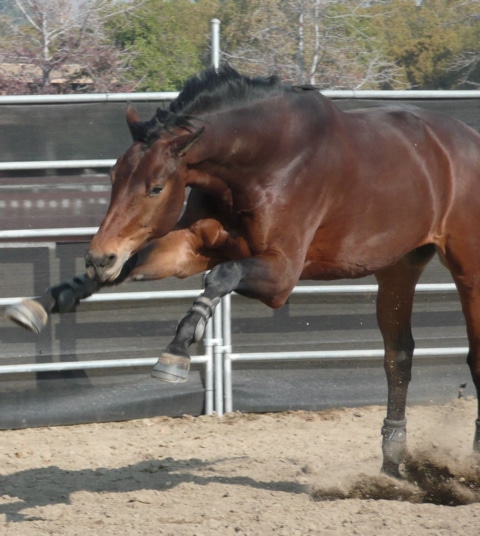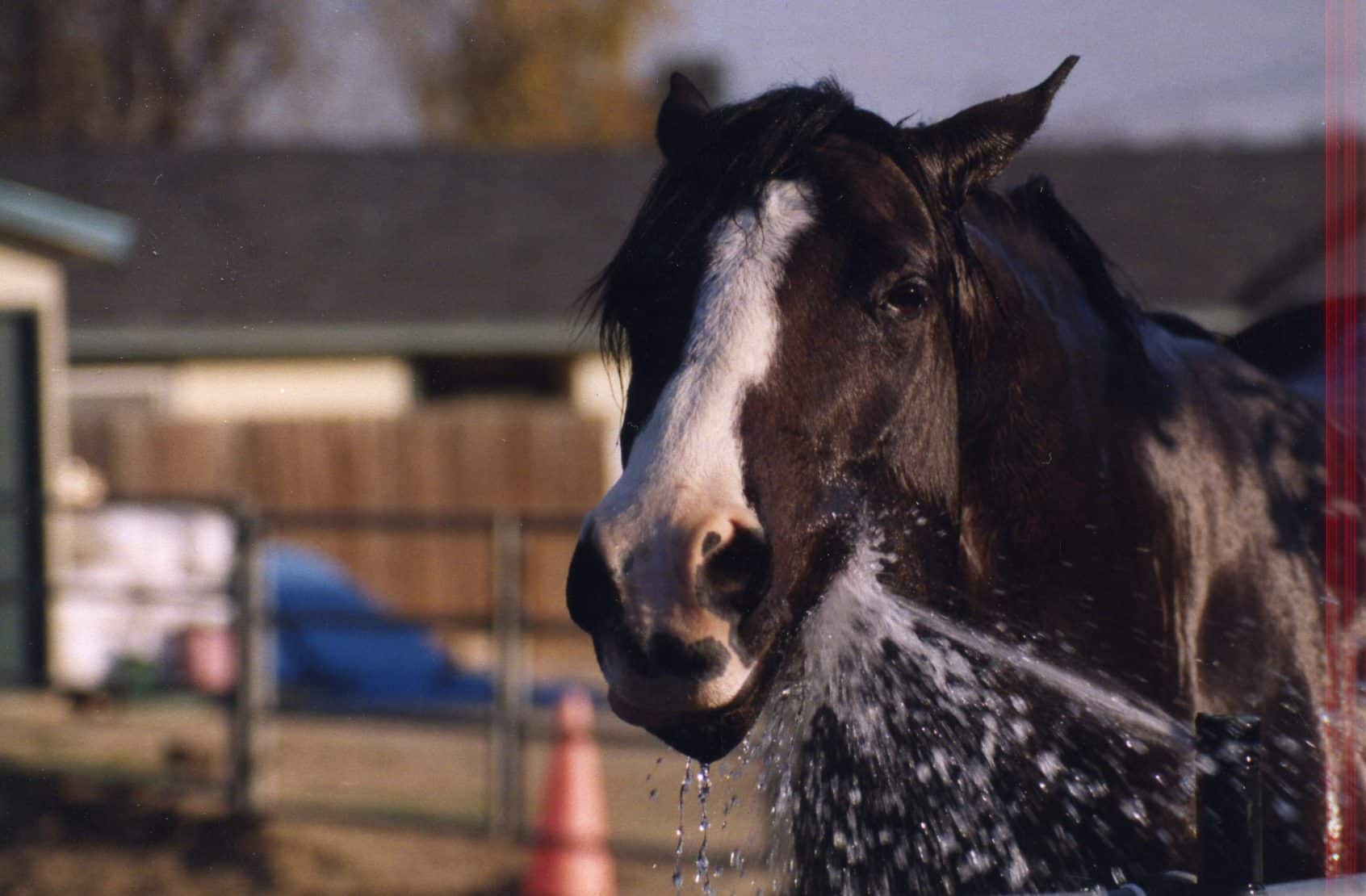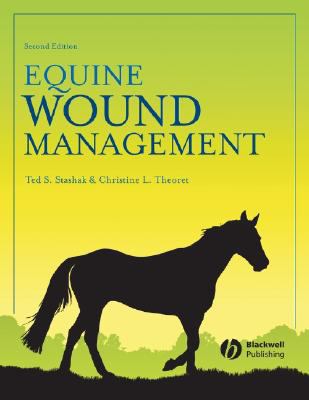As most of you know, guidelines for internal parasite control in horses have changed a lot over the past 10 years or so. This is a good thing, because we’ve come to realize that:
 The idea that any parasite living in any horse is the worst thing that could possibly happen (to the horse) has been misguided
The idea that any parasite living in any horse is the worst thing that could possibly happen (to the horse) has been misguided- Horse owners (and, to a certain extent, veterinarians), have been told for decades that horses had to be dewormed all of the time, so, they’ve been dewormed all of the time
- Parasites want to live, too
- Parasites have figured out ways around most of the common deworming medications
Those thoughtful folks at the American Association of Equine Practitioners (AAEP) have just released their updated guidelines for parasite control. You can see them if you CLICK HERE. Since they are new, and a bit dense, I thought it might be helpful to sum them up and explain them a bit, just in case you have other things to do than go digging through scientific references and trying to interpret scientific vernacular.
FOR STARTERS
 According to the AAEP, if you haven’t already made them, there are six changes that you should consider making to your deworming program.
According to the AAEP, if you haven’t already made them, there are six changes that you should consider making to your deworming program.
- Check to see how your deworming product is working by seeing if fecal egg counts are being reduced over time.
- Don’t deworm according to some interval, year round.
- Stop “rotating” dewormers.
- Stop deworming your horse so often.
- If strongyle parasites are a problem, target dewormers at the time when strongyles are actively transmitted.
- Don’t use fecal egg counts to diagnose clinical disease.
Let’s go one recommendation at a time.
#1 – CHECK TO SEE HOW YOUR DEWORMING PRODUCT IS WORKING BY SEEING IF FECAL EGG COUNTS ARE BEING REDUCED OVER TIME
As odd as it might seem, you really shouldn’t be trying to get to zero parasites on every horse. For one, it’s probably not possible, especially given the current state of resistance that parasites have developed to common dewormers. Instead, you’re trying to see if the overall parasite burden is being reduced. It turns out that horses tolerate parasites (and vice versa) pretty well, as long as things don’t get out of hand. Here’s how you do this, depending on your horse’s circumstances.
If your horse is in a pasture with other horses:
 Find a group of horses with positive fecal egg counts
Find a group of horses with positive fecal egg counts- Test at least five horses (more is better – it gives a more accurate reading, but five is a good start). If you can’t test five, you have to be more careful in interpreting the results.
- Count as many eggs as can be counted (this is likely less fun than many other things that you’ve done, but it’s important).
- Give a dewormer at the dosage on the label.
- Do more fecal testing 14 days later, and on the same horses, using the same techniques you used on the first go ‘round.
- Do math. To be more precise, the guidelines say, “Calculate the 90% confidence intervals for the percent reduction for the group by use of online calculation software https://www.fecrt.com/. You can also calculate the mean percent reduction for the group or a single horse using the formula: ((total eggs counted pre – total eggs counted post)/ total eggs counted pre) X 100%.” Or, if that’s seems a bit much (and, honestly, it does sound a little daunting) you can ask your veterinarian to do it. Or make friends with a mathematician.
- Interpret your results (with your veterinarian).

If you’re testing horses individually, that is, if you’re testing horses that don’t live with other horses in a pasture you can just check them from time to time.
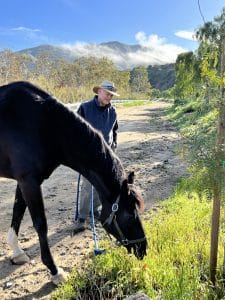
Me, and Piper
That’s what I do with my horse, Piper. Piper just turned 11. She was raised in a pasture with a few other horses, at a friend’s house a couple of hundred miles away from me. When she came home, I tested her feces (I didn’t do an egg count – there’s not much point in a single animal). She had some eggs, so I dewormed her. Now, since she doesn’t live in a pasture with other horses (those spots are few and far between in Southern California), I test her every six months or so (that’s what veterinary husbands do, or should do). As a result, Piper has never been dewormed again, that is, she’s been dewormed once in her life. She’s still standing.
#2 – DON’T DEWORM ACCORDING TO SOME INTERVAL YEAR ‘ROUND
It used to be recommended that horses be dewormed according to some “interval,” all throughout the year, under the “bigger hammer” theory of medicine, that is, the more medicine you can give, the more likely it is that it will work. As it turns out, it doesn’t.
Instead of deworming on some interval chosen for who-knows-what-reason, consider deworming all of the horses in a herd once or twice a year, and try to identify horses that are high egg shedders (based on egg count) to deworm more often. Doing it that way makes a lot more sense and it will save you money, too!
#3 STOP “ROTATING” DEWORMERS

Robert Burns (in case you didn’t know)
Here, the idea was that if you used a different deworming agent each time that you dewormed your horse, you’d eventually get rid of all of the pesky little parasites: if the first dewormer didn’t get the worm, the next one (or the next one) surely would. The best laid plans and all…
LITERARY NOTE: This well-known saying is adapted from a line in “To a Mouse,” by the 18th century Scottish poet and lyricist, Robert Burns, who said, “The best laid schemes o’ mice an’ men / Gang aft a-gley.” I think it was translated not only because it’s very wise, but also because it’s one of the few phrases where the Scottish language can also be understood.
Anyway, it turns out that 1) The “rotating” didn’t kill all the parasites and 2) it exposed those that it didn’t kill to all of the different dewormers so that they could then become resistant to all of them. Oops. Currently, in many cases, due to the widespread resistance to many of the common dewormers, you only have one or two effective choices anyway (usually, ivermectin or moxidectin).
Current recommendations are to use one dewormer, check to see how the control program is going, and modify if you need to.
#4 – STOP DEWORMING YOUR HORSE SO OFTEN
 At this point in time, we know that the approaches that were followed in previous decades didn’t work. They didn’t make any biological or medical sense (ah, hindsight). They didn’t do much beyond making equine internal parasites resistant to dewormers. You can’t make blanket statements about what’s best for individual horses, but what makes the most sense now is to do periodic fecal exams, and deworm only when the horse has a significant number of eggs in his manure. Of course, this recommendation could change in the future, as well, but for now, that’s the best we’ve got. CLICK HERE to read a parable, with solutions.
At this point in time, we know that the approaches that were followed in previous decades didn’t work. They didn’t make any biological or medical sense (ah, hindsight). They didn’t do much beyond making equine internal parasites resistant to dewormers. You can’t make blanket statements about what’s best for individual horses, but what makes the most sense now is to do periodic fecal exams, and deworm only when the horse has a significant number of eggs in his manure. Of course, this recommendation could change in the future, as well, but for now, that’s the best we’ve got. CLICK HERE to read a parable, with solutions.
 #5 – IF STRONGYLE PARASITES ARE THE MAIN PROBLEM, DEWORM FOR THEM AT A TIME WHEN STRONGYLES ARE ACTIVELY TRANSMITTED
#5 – IF STRONGYLE PARASITES ARE THE MAIN PROBLEM, DEWORM FOR THEM AT A TIME WHEN STRONGYLES ARE ACTIVELY TRANSMITTED
Strongyle eggs are the ones that initially caused much of the “Kill the Parasites” mania, based largely on some very horrible pictures of horses that had serious problems from severe parasite infestations. However, it doesn’t make sense to constantly try to kill strongyles. It turns out that the eggs develop into infective larvae at different rates, based mostly on climate (there’s data in the AAEP recommendations about a specific area in the US). So, if you’re trying to control strongyles, you should deworm at a time when the dewormer is most likely to be effective, i.e., during the active transmission season. There’s no reason to deworm at all if the eggs are just going to die, say, when it’s really cold, or when the eggs get pooped out onto a hot desert (like Southern California).
#6 – DON’T USE FECAL EGG COUNTS TO DIAGNOSE CLINICAL DISEASE
 Most of the time, a few parasites inside your horse will not cause any problems (for the horse or the parasite). While parasites can occasionally cause problems in horses, diagnosing cases of equine parasitic disease is not always as straightforward as you might think. Parasite egg shedding is a normal finding in clinically healthy animals. So, don’t think that a few parasite eggs in the feces means your horse is about to get really sick, and don’t rely on egg counts to be the sole diagnostic criteria for clinical disease. Otherwise stated, if your horse is losing weight, or seems to colic a lot, a finding of eggs in the manure is likely to be more significant than if your horse is normal. Work with your veterinarian on this one.
Most of the time, a few parasites inside your horse will not cause any problems (for the horse or the parasite). While parasites can occasionally cause problems in horses, diagnosing cases of equine parasitic disease is not always as straightforward as you might think. Parasite egg shedding is a normal finding in clinically healthy animals. So, don’t think that a few parasite eggs in the feces means your horse is about to get really sick, and don’t rely on egg counts to be the sole diagnostic criteria for clinical disease. Otherwise stated, if your horse is losing weight, or seems to colic a lot, a finding of eggs in the manure is likely to be more significant than if your horse is normal. Work with your veterinarian on this one.
A COUPLE OF OTHER THINGS
What About “Natural” and other Deworming Products?
You can find “organic” or “herbal” dewormers all over the place. The problem is that none have them have ever been shown to be effective in horses. Such things are sold for cattle and sheep, too, but several studies in sheep have shown that they don’t work. If they don’t work in sheep, they won’t work in horses, either.

Totally natural
The reason that companies can get away with selling these things is because the language used to market them is very careful not to make claims that could make them be considered to be drugs. For a product to be considered and effective drug, it has to be proven effective to the US Food and Drug Administration, and the advertising for such products is regulated. On the other hand, the other stuff doesn’t have any real oversight. There’s no pre-market testing or approval required – all you need to be able to do is write alluring advertising copy that avoids making drug claims. It’s dumb to waste money on these sorts of products. Sadly, they’re everywhere in the horse world (not just in the parasite-control arena). If there’s parasite resistance to a deworming product that works, the solution is NOT to pay good money for something that doesn’t do anything.
I’ve written about this, too (CLICK HERE ).
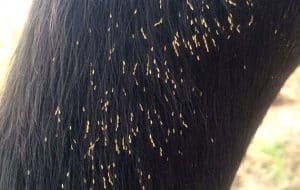 WHAT ABOUT BOTS?
WHAT ABOUT BOTS?
I have to put this in, because every time I bring up fecal exams, someone brings up bots. You typically see bot eggs as little yellow blobs on the hair of horse’s legs, on horses that live in areas where bot flies live. The thing is, there’s not much evidence that bots really hurt horses and you don’t want to base your treatment decisions on controlling bots. That said, the old, “30 days after the first frost” is probably still OK, and ivermectin dewormers are still the best choice.
CONCLUSIONS
 That’s pretty much it for the overview. The details are in the report, and, although it’s pretty dense, it’s worth digging through, or, failing that, asking you veterinarian to dig through it. There are certainly other worms to consider, there are details in the AAEP recommendations, and I’ve written about those, too (CLICK HERE). Plus, there are a lot of myths about deworming that just seem to go on and on (CLICK HERE); like medical zombies, these ideas just seem to go on and on, and a lot of the myths are covered in the AAEP Guidelines, too.
That’s pretty much it for the overview. The details are in the report, and, although it’s pretty dense, it’s worth digging through, or, failing that, asking you veterinarian to dig through it. There are certainly other worms to consider, there are details in the AAEP recommendations, and I’ve written about those, too (CLICK HERE). Plus, there are a lot of myths about deworming that just seem to go on and on (CLICK HERE); like medical zombies, these ideas just seem to go on and on, and a lot of the myths are covered in the AAEP Guidelines, too.
The takeaways on the new AAEP Guidelines are, for horse owners, pretty good, I think. They certainly make more medical sense. Following the recommendations is probably a little less costly, too (when compared to rotating products through a bunch of horses every couple of months). Perhaps the best thing to keep in mind is that there are a lot more things in the world that are worse for horses than a few internal parasites. Just keep an eye on things, treat as needed, and everything will probably work out just fine.


